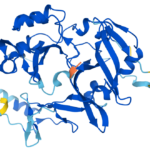Scared straight: How prophets of doom might save the world
By Émile P. Torres | May 27, 2021
 Greta Thunberg often paints the world as being in a dire position, stirring her followers into confronting the existential threat of climate change. Credit: Markus Schweizer. CC BY-SA 4.0.
Greta Thunberg often paints the world as being in a dire position, stirring her followers into confronting the existential threat of climate change. Credit: Markus Schweizer. CC BY-SA 4.0.
Several years ago, a team of Australian researchers asked people in the United States, the United Kingdom, Canada, and Australia about how probable a global catastrophe in the near term might be. They found that “a majority (54 percent) rated the risk of our way of life ending within the next 100 years at 50 percent or greater, and a quarter rated the risk of humans being wiped out at 50 percent or greater.” Another study that focused only on climate change found that “four in ten Americans think the odds that global warming will cause humans to become extinct are 50 percent or higher.” A search for “human extinction” via Google Ngram Viewer, which combs through digitized documents in Google’s collection, shows a significant leap in the term’s frequency over the past 20 years.
The Australian researchers also noted that, when confronted with end-of-the-world thoughts, people tend to have one of three responses: first, they interpret the situation through the prism of religion. On this view, the threat of catastrophe is seen as part of the grand battle between Good and Evil in the universe. Second, people come to believe that “the world’s future looks grim so we have to focus on looking after ourselves and those we love,” or in a “weaker” form, “we should enjoy the life we have now, and not worry about what might happen to the world in the future.” And third, people latch onto the idea that “we need to transform our worldview and way of life if we are to create a better future for the world.” The authors referred to these fundamentalism, nihilism, and activism, respectively.
The fact is that many scholars who study existential threats agree that the probability of doom is higher today than ever before in humanity’s 300,000-year history. From nuclear weapons to killer drones to designer pathogens, humanity is acquiring much more efficient methods of bringing down civilization or causing our extinction than in the past. Lord Martin Rees, a world-renowned cosmologist at the University of Cambridge, estimates that human civilization has a 50/50 chance of making it through this century intact.
Given the ominous possibility that Rees and others are right, the key question is how to talk about global catastrophic risks in ways that inspire people to become activists, rather than nudge them into fundamentalist beliefs or an attitude of defeatism.
In the book Enlightenment Now!, the psychologist Steven Pinker worries that the “drumbeat of doom” will ultimately backfire: “Humanity has a finite budget of resources, brainpower, and anxiety.” When these resources are used up, brainpower has been drained, and anxiety reaches a tipping point, the result may be a paralyzing sense that “humanity is screwed.” And if humanity is screwed, then “why sacrifice anything to reduce potential risks? Why forgo the convenience of fossil fuels, or exhort governments to rethink their nuclear weapons policies? Eat, drink, and be merry, for tomorrow we die!” In other words, Pinker is afraid that people will succumb to nihilism rather than activism.
But is this warranted? Pinker notes that many leading intellectuals throughout the Atomic Age have made dire predictions that the world is about to end. For example (these are taken from Pinker):
Albert Einstein warned in 1950 that “only the creation of a world government can prevent the impending self-destruction of mankind.”
C.P. Snow, an English novelist and chemist, wrote in 1961 that “within, at most, 10 years, some of those [nuclear] bombs are going off. I am saying this as responsibly as I can. That is the certainty.”
Joseph Weizenbaum, an MIT computer scientist, declared in 1976 that “I am completely certain … that by the year 2000, you [students] will all be dead.”
Hans Morgenthau, an influential international relations theorist, opined in 1979 that “the world is moving ineluctably towards a third world war—a strategic nuclear war. I do not believe that anything can be done to prevent it.”
But the nuclear holocaust didn’t happen. Were these proclamations a misguided waste of nerves that did nothing more than frighten people at the time? In fact, a survey conducted after the Cuban missile crisis in 1962, later described by the historian Arthur Schlesinger Jr. as “the most dangerous moment in human history,” found that some 40 percent of adolescents experienced a “great deal” of anxiety about the possibility of war. Another survey that asked schoolchildren about the world in 10 years reported that more than two-thirds mentioned war, “often in terms of somber helplessness.” As a junior high-school student put it in the early 1980s, responding to an article on the “nuclear winter hypothesis” written by the cosmologist Carl Sagan, “My friends are scared. Sometimes they think—Will we wake up to see the world tomorrow?”
These warnings may very well have galvanized people into action.
Perhaps the doomsday prognostications of Einstein, Snow, Weizenbaum, Morgenthau, and others were “self-defeating prophecies” that, by virtue of foregrounding the worst-case outcomes, led to actions that saved humanity.
Many people accused Sagan of alarmism about nuclear weapons. Even pro-disarmament colleagues, someone wrote in a 1997 obituary for Sagan, described the nuclear winter scenario that Sagan popularized in the early 1980s as “the worst example of the misrepresentation of science to the public in my memory.”[1] But the fact is that former Soviet Premier Mikhail Gorbachev told former US President Ronald Reagan in 1988 that Sagan’s activism against nuclear weapons was “a major influence on ending proliferation.”
Today, young climate activists like Greta Thunberg embraced the strategy of frightening people into action. In a 2019 message in Davos, she declared:
Adults keep saying: “We owe it to the young people to give them hope.” But I don’t want your hope. I don’t want you to be hopeful. I want you to panic. I want you to feel the fear I feel every day. And then I want you to act.
So far, the strategy hasn’t solved the climate crisis, but it could very well be the best approach going forward. Fear can be paralyzing, but it can also be motivating. There is no point to sugar-coating our collective plight: It is absolutely dire. We really do face a higher probability of catastrophe today than ever before in our history, if one takes seriously the estimates from Martin Rees and others. A 2008 informal survey of experts, for example, put the median probability of extinction this century at 19 percent, and of course the minute hand of the Doomsday Clock is currently set to a mere 100 seconds before midnight.
But the urgency of humanity’s present situation is only half of the story.
Communicating about existential risks is a two-step process: First, the messengers need to stress that not a single problem facing humanity is hopelessly insoluble. And second, they need to point out that there are things that every person on the planet can do to make things better. We know how to solve climate change. We know what we’d have to do to redirect an asteroid or comet away from Earth. We know how early detection systems can prevent a global pandemic. We even understand that in about 800 million years, the sun will become too luminous for complex lifeforms, like us, to continue residing on this planetary island. We know we will have to move.
There are solutions to each of these problems. Some may involve technological fixes, while others might require changes to our norms, attitudes, or the structure of political systems. But there is nothing inevitable about humanity’s self-destruction this century or beyond. The only natural existential threat that we don’t currently know how to mitigate is a supervolcanic eruption. A speculative plan from NASA scientists, for example, involves pumping high-pressure water into magma chambers to prevent a supereruption, but these scientists add that this might inadvertently trigger a catastrophe. More research, though, could very well provide an answer.
Along similar lines, we do not yet have any good solutions to what AI risk researchers call the “control problem,” that is, the puzzle of how to effectively control an algorithm whose general intelligence capabilities far exceed those of the smartest possible humans. But again, there is no reason to believe that further exploration of the problem won’t reveal an effective solution. In other words, there is hope, an essential feature of activism.
Beyond this, there are plenty of ways that each of us, as individuals, can ensure a good outcome for humanity in the face of grave dangers. Obvious things include flying less, recycling, embracing a vegetarian or vegan diet, supporting movements like Fridays for Future, donating money to charities or think tanks, and even (controversially) having one fewer child. Young people might consider pursuing degrees in philosophy, public health, microbiology, computer science, or climatology to help solve the biggest challenges humanity has ever faced. Alternatively, it may be that some threats can only be solved from the top down—for instance, via government regulation. In this case, our moral obligation would be to call our government representatives and demand change—and, if that fails, to vote better politicians into office.
This is how we create activists: Tell the truth about how bad our existential predicament is, but always emphasize that the situation is far from hopeless, nor are you and I helpless. There is reason for optimism—conditional optimism: If we take the risks seriously and act accordingly, the future could be better than ever before.
[1] Editor’s note: Actually, subsequent research has supported and extended Sagan’s original thesis, showing that even a “small” regional nuclear war has the potential to cause starvation worldwide through the environmental effects of the smoke from fires ignited by nuclear weapons, and that a war between the United States and Russia using today’s arsenals could produce a nuclear winter and global famine.
Together, we make the world safer.
The Bulletin elevates expert voices above the noise. But as an independent nonprofit organization, our operations depend on the support of readers like you. Help us continue to deliver quality journalism that holds leaders accountable. Your support of our work at any level is important. In return, we promise our coverage will be understandable, influential, vigilant, solution-oriented, and fair-minded. Together we can make a difference.
Keywords: Martin Rees, existential risk
Topics: Disruptive Technologies
















This article is very misleading about nuclear winter, implying that the theory was wrong, using links to anecdotal comments. Actually, the research by myself, Brian Toon, and our colleagues, using state-of-the-art climate models, shows that a nuclear war between the US and Russia today could produce nuclear winter. See, for example, http://climate.envsci.rutgers.edu/pdf/CoupeNWjgr.pdf , and http://climate.envsci.rutgers.edu/nuclear/ for all our recent work.